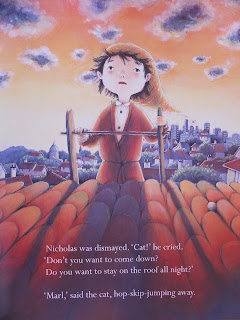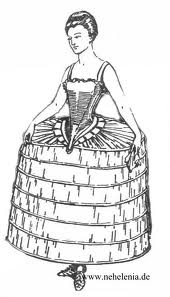I knew when I first saw Sweet Paris in a shop before Christmas that I would buy it. I didn't know then that I would end up buying 3 copies! Paris research is painstaking.
Michael Paul is a New Zealander as it turns out. A
lifestyle photographer based in London, Michael has been lucky to visit Paris many times, and done his fair share of eating his way around the city. Here he combines lovely photos of Paris and her sweet treats, with his picks for the best of the best, and even 22 recipes to recreate a little piece of Paris magic in your own kitchen. Rather surprisingly he suggests that Sweet Paris wasn't intended as a guide! I think it makes a rather excellent guide.
Organised in chapters such as The Chocolate Capital of the World, Patisserie and Salon de The Classics, Traditional Viennoiserie, Decadent Desserts, Ice Cream Gelato and Sorbet, and Confiserie Michael Paul takes us through the history and provenance of these famous delicacies, such as the quintessentially French croissant- so many of which have actually come from Austria and Italy, but then been refined, perfected, and taken to heart in France.
Since the introduction of sugar in French cuisine, the country's cooks have been conjuring up all manner of confiserie, and there is no doubt that other cultures have influenced them to a great extent. The petit four appears a very French invention but its origins are oriental. Calissons, which are traditional candy from Aix-en-Provence, came originally from Italy, nougat from Persia and dragees, sugared almonds, probably from Greece.
As with everyone who has visited Paris more than once we all have wonderful memories of delicious treats eaten in extraordinary locations. And I'm happy to take his suggestions and broaden my range of experiences. I am now especially keen to try a Paris-Brest- I had not realised that the rather bizarre shape was styled on a bicycle tyre from the famed Paris Brest cycle race, a Chausson aux Pommes (an apple turnover), and glace marron (glace chestnuts) which I have eyed before but never had the time to eat- but who could not be won over by such gushing description as....
Who can resist those glazed crystallised chestnut confectioneries candied in sugar syrup when cavorting in the French capital? They're the height of indulgence: subtly sweet, rich, nutty, gooey morsels of vanillary delectation that come wrapped in that gorgeous gold paper you can't help licking to savour every drop of sticky deliciousness.
He's almost channeling Nigella with that- and I'm in. Another new to me treat is the delectable looking meringues found at
Au Merveilleux de Fred. Oh my. I can see my first visit to the 15th coming up.
Michael Paul's Top 10 Paris Greats
Pierre Herme
-macarons of course, the best patissier in Paris.
Patrick Roger
- the 'wild child' of chocolate, his favourite chocolatier in France.
Gerard Mulot
-patissier with wonderful selection of chocolates and confisserie.
Ble Sucre
-one of the best small neighbourhood patisseries, his madeleines have a cult following, his croissants are equally good.
Des Gateaux et du Pain
-patisserie and viennoiserie
Du Pain et des Idees
-beautiful old neighbourhood boulangerie- chausson aux pomme, banana pain au chocolat, pain aux raisin.
Pain de Sucre
-adventurous patisserie specialising in melt-in the-mouth marshmallows (guimauve), baba au rhum and pain d'epice is a must.
Poilane
- world renowned bakery with some of the best bread in Paris, also a fabulous selection of viennoiserie including a rustic, cinnamon apple tart to die for and their famous sable 'punition'.
A La Mere de Famille
-Paris's oldest and most beautiful confiserie and chocolatier- they do an amazing chocolate ice cream.
Carette
-patisserie and salon de the is a Paris institution. Place des Vosges not so crowded. The Trocadero location has a stunning view of the Eiffel Tower.
An exciting list as I've only darkened the doors of Pierre Herme and Poilane on my previous trips. So much to do....
Michael Paul has some rather opinionated views about chocolate in Paris. Foremost he calls Paris the Chocolate Capital of the World. His favourite maitres chocolatiers are Patrick Roger, Pierre Herme,
Franck Kestener and
Jacques Genin (who has sadly currently suspended making pastries to concentrate on chocolate and caramels). All of whom I look forward to trying.
True connoisseurs of chocolate focus on chocolate rather than chocolates- in other words, bars and not filled chocolates, or bonbons. They believe that the bar is the purest, most concentrated form of real chocolate, while bonbons fall into the realm of 'candy chocolate'. Purists talk of chocolate as though it was wine, and use the same flowery vocabulary- nutty, spicy, fruity, etc- to describe it.
Just like my friend Hannah from
Wayfaring Chocolate. Perhaps I'm beginning to understand.
I was rather pleased to see that on my first trip to Paris way back in 1998 I managed to eat what is still regarded as one of the best chocolate tarts (the chocolate silk tart from
La Maison du Chocolat) and the exceptional pate des fruits from Fauchon. Both experiences that I remember to this day. I can't wait to make some more lifelong memories later in the year.

















































